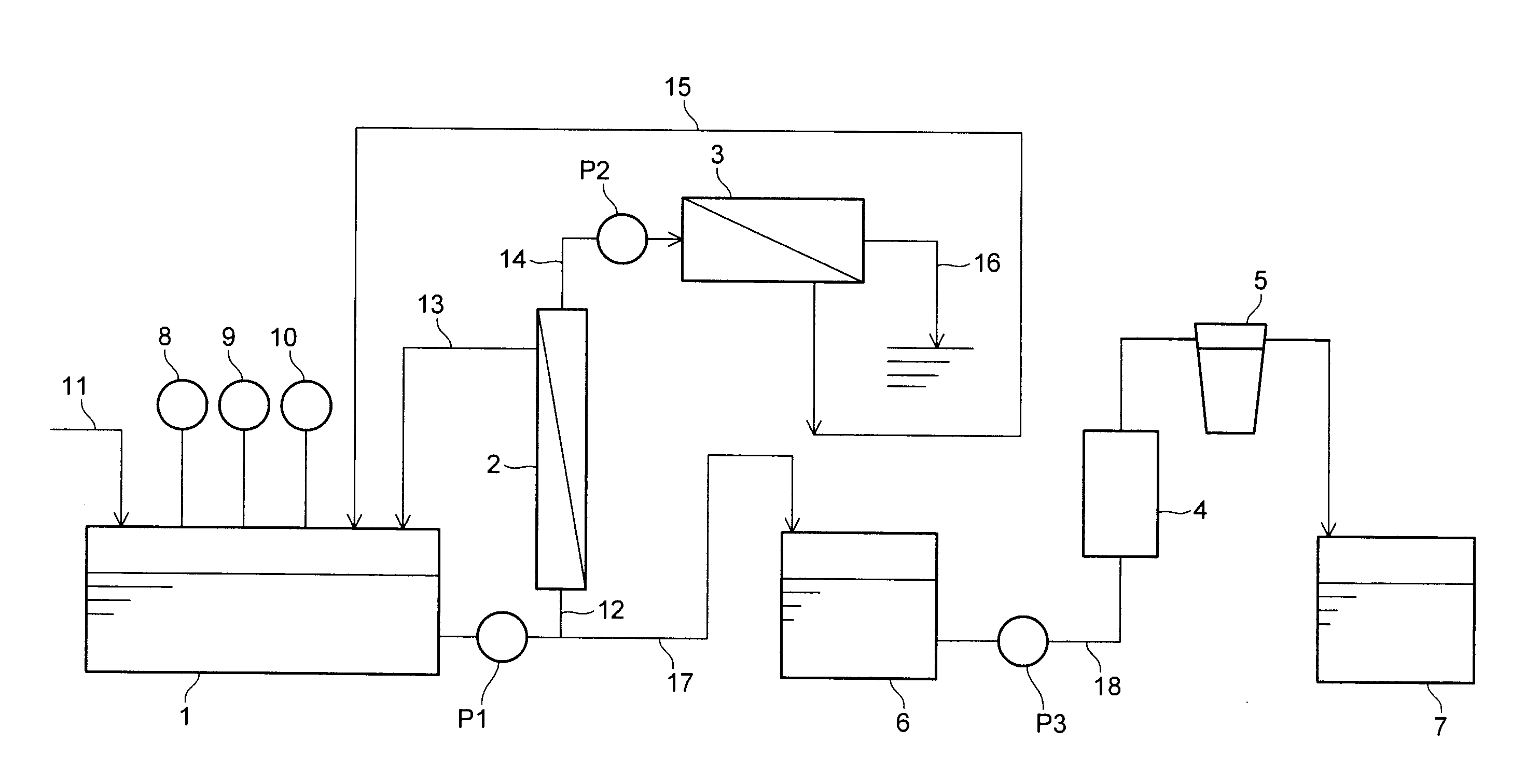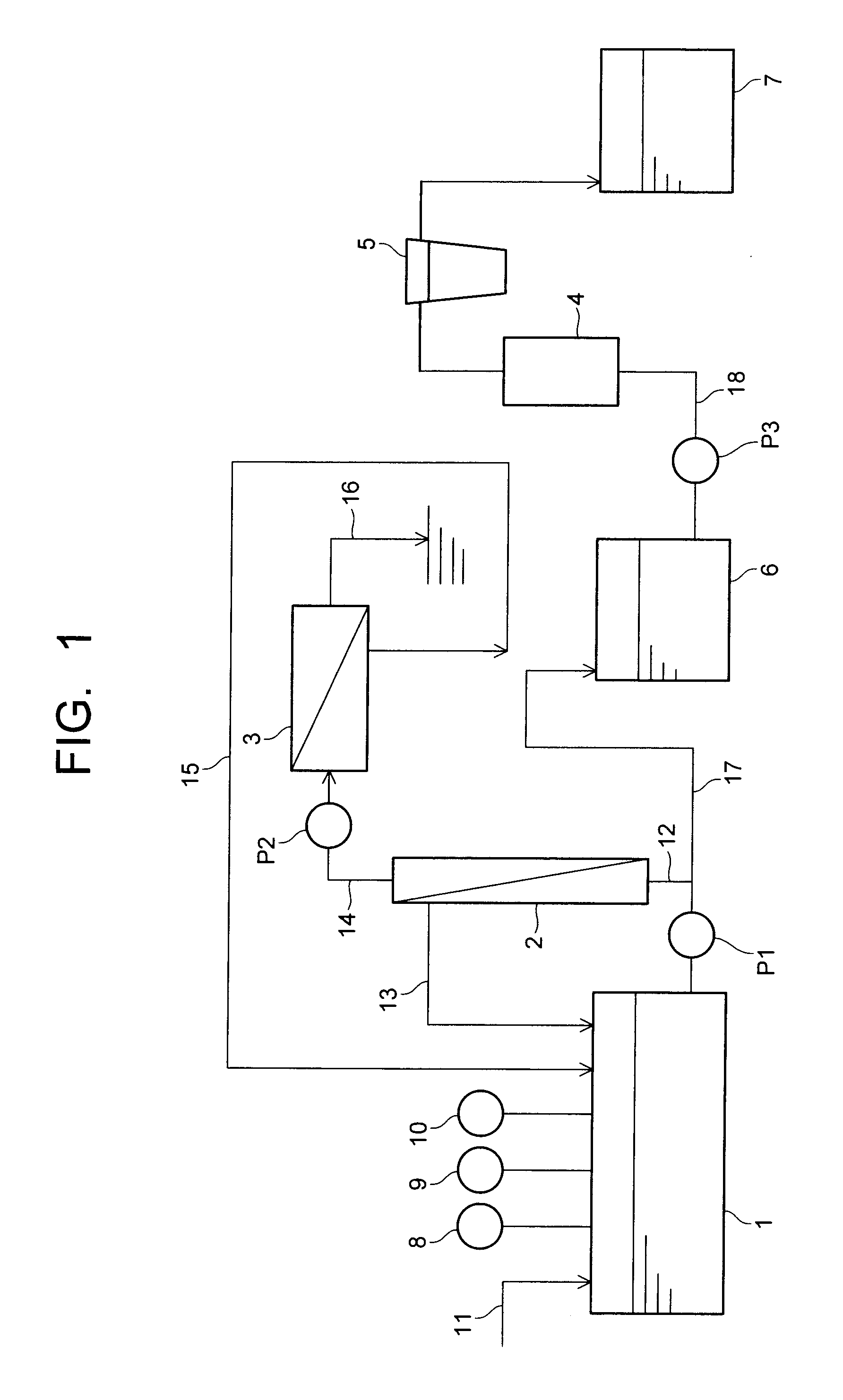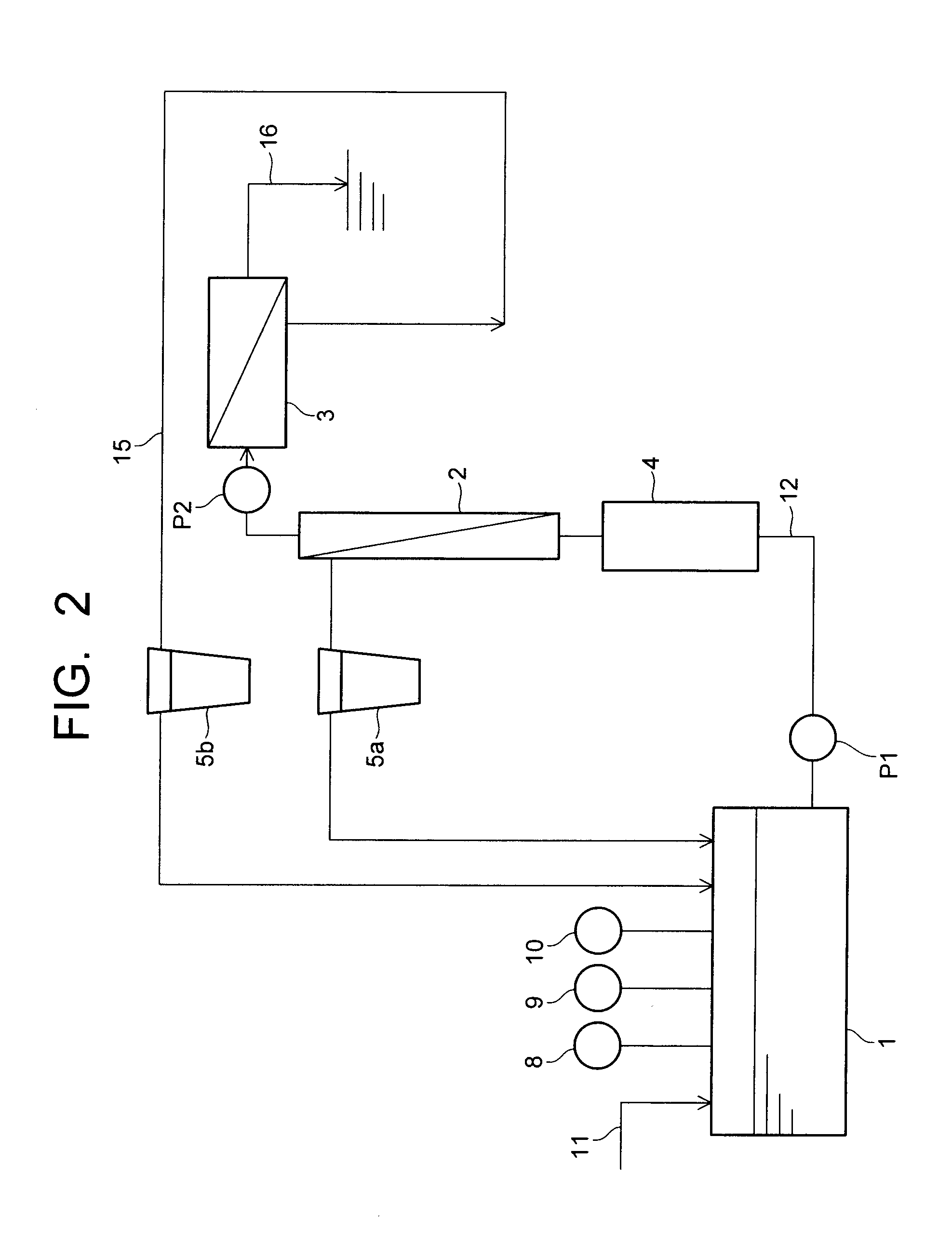Method for recovering a used slurry
a technology for polishing slurry and used slurry, which is applied in the direction of multi-stage water/sewage treatment, membranes, separation processes, etc., can solve the problems of additional treatment cost, and achieve the effect of improving contacting efficiency, facilitating processing, and improving contacting efficiency
- Summary
- Abstract
- Description
- Claims
- Application Information
AI Technical Summary
Benefits of technology
Problems solved by technology
Method used
Image
Examples
example 1
[0085]The slurry waste (used polishing slurry) of a polishing agent to be used in a planarization process was recovered as follows. First of all, a ceramic filter made of an Al2O3 base and a ZrO2 coating was prepared so that the water component and the silica abrasives of the polishing agent were separated with the ceramic filter. The pore diameter of the ceramic filter was set to 0.05μm. The ceramic filter causes the increase of the abrasive density in the slurry waste. The circulating flow rate of the slurry waste for the ceramic filter was set to 4 m / sec so that about 35 L of the slurry waste can be filtered (treated) per one hour (namely, about 35 L of the filtrate can be obtained).
[0086]The thus obtained filtrate was transferred to a RO film (a polyamide film UTC-80 made by Toray Industries, Inc). In this case, the concentrating ratio (amount of supplied water / amount of concentrated water) was set to two.
[0087]The tungsten element and titanium element contained in the slurry wa...
example 2
[0090]5 kg of chelate fiber (CG-50 (trade name)) was packed in a cylindrical container with a diameter of 150 mm and a length of 850 mm to form a chelate module. Then, the slurry waste was fed to the chelate module from the intermediate tank 6 at a rate of 0.3 L / min. The feeding rate of 0.3 L / min was determined in view of the selective removal of the iron element and the tungsten element contained in the slurry waste. The iron element was originated from an additive to the slurry waste and the tungsten element was originated from a substance to be polished. In this case, the tungsten element was removed while the iron element was left.
[0091]The results of the examples are listed in Table 1. The sample was named as follows. The sample obtained from the piping 11 was named as a “slurry waste”, and the sample obtained from the piping 13 corresponding to the concentration line of the ceramic filter 2 was named as a “concentrated solution (1)”. The sample obtained from the piping 15 corr...
PUM
| Property | Measurement | Unit |
|---|---|---|
| median size | aaaaa | aaaaa |
| median size | aaaaa | aaaaa |
| pore diameter | aaaaa | aaaaa |
Abstract
Description
Claims
Application Information
 Login to View More
Login to View More - R&D
- Intellectual Property
- Life Sciences
- Materials
- Tech Scout
- Unparalleled Data Quality
- Higher Quality Content
- 60% Fewer Hallucinations
Browse by: Latest US Patents, China's latest patents, Technical Efficacy Thesaurus, Application Domain, Technology Topic, Popular Technical Reports.
© 2025 PatSnap. All rights reserved.Legal|Privacy policy|Modern Slavery Act Transparency Statement|Sitemap|About US| Contact US: help@patsnap.com



